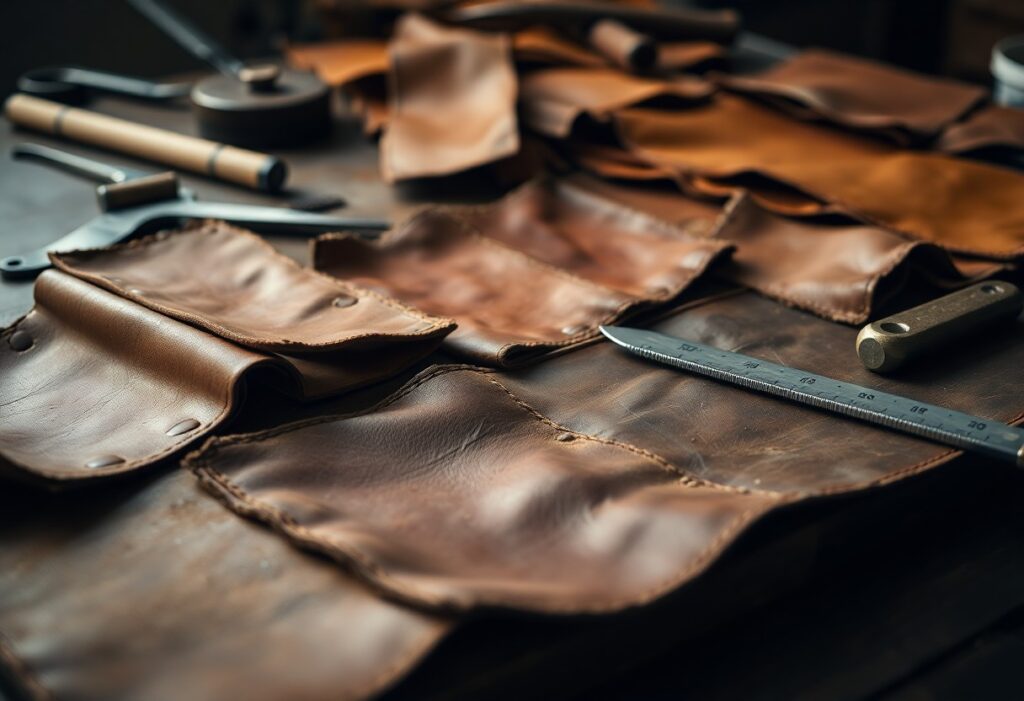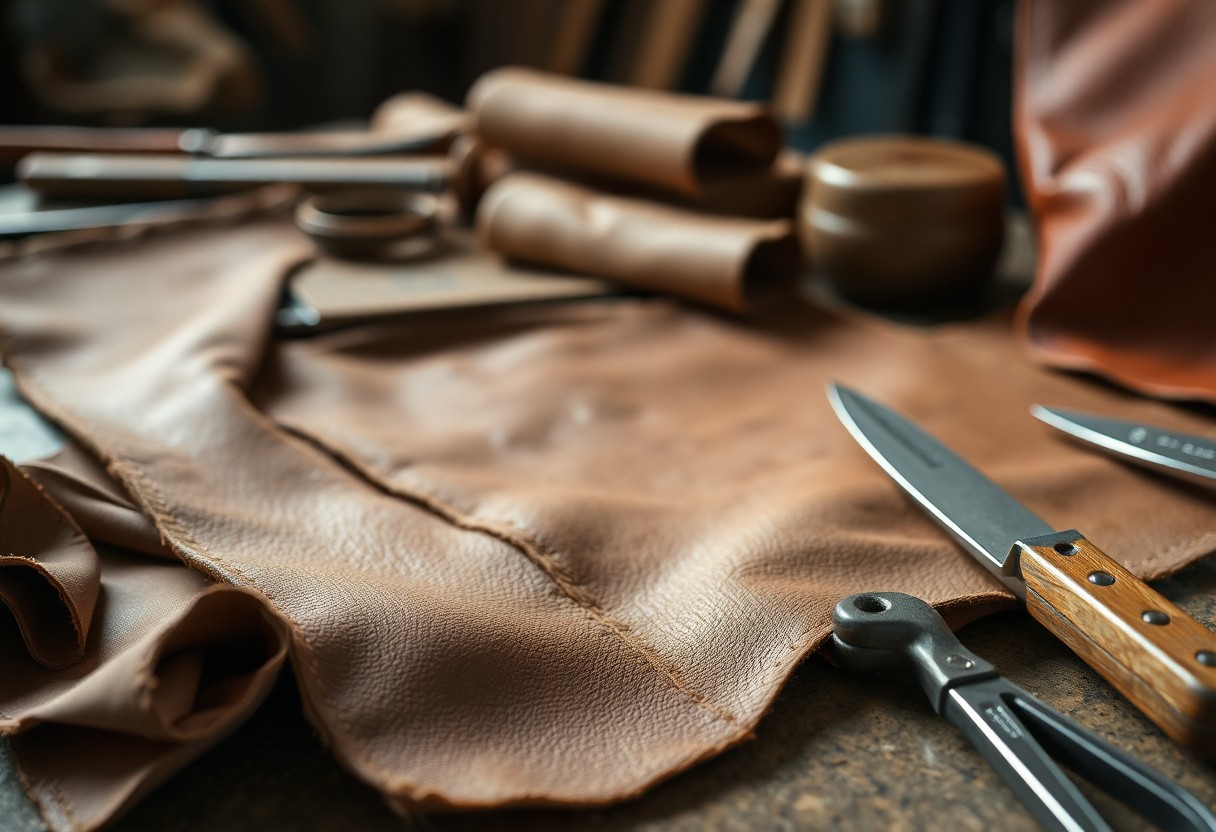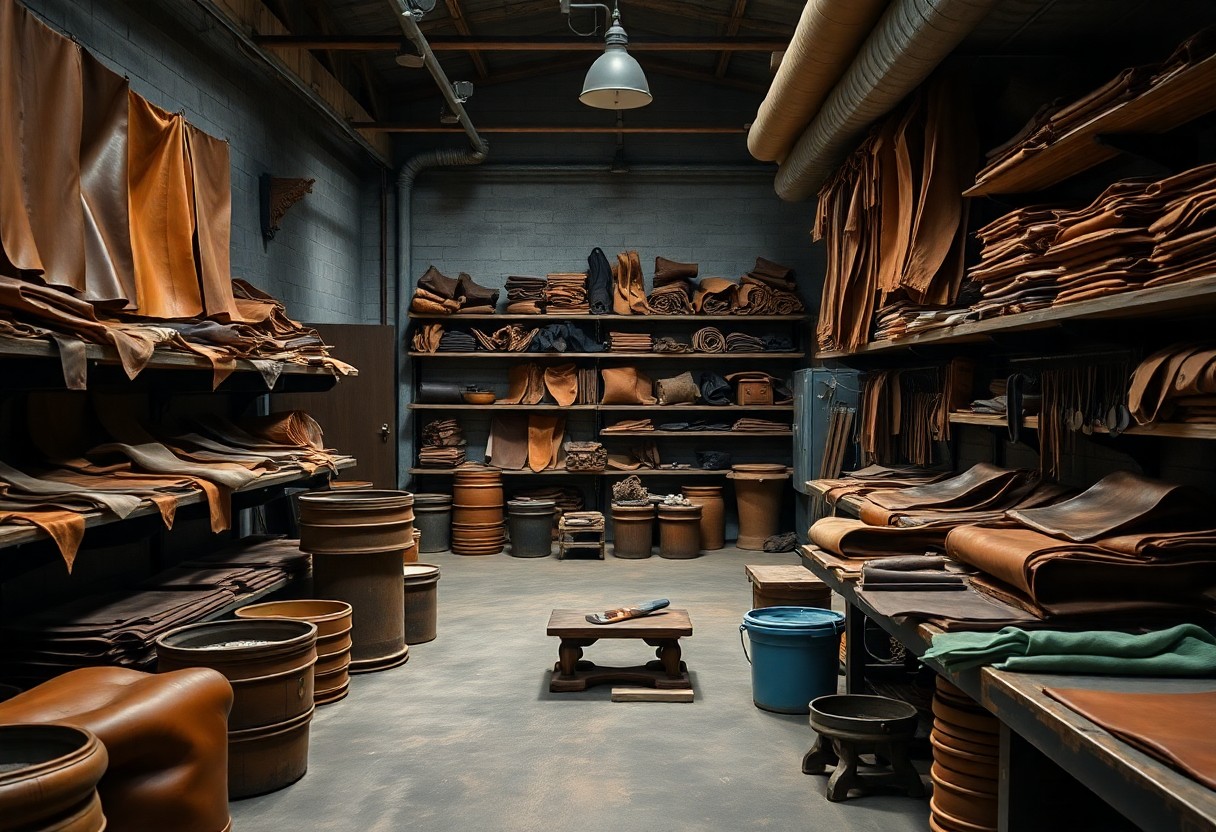
The evolution of leather tanning throughout history has led to a complex and multifaceted process that profoundly influences the quality of your leather goods. Different tanning methods create specific attributes in leather, affecting qualities such as durability, water resistance, texture, and color retention. The tanning journey begins with raw hides and progresses through various critical stages, which may include chrome tanning, vegetable tanning, and chrome-free techniques. Each method uniquely defines the leather’s properties, ultimately influencing its usability and required maintenance. Understanding these processes in depth empowers you to make educated choices concerning leather quality, especially when taking environmental considerations into account, as some methods are significantly more eco-friendly than others.
Discover the Different Leather Tanning Techniques for Quality Craftsmanship
In the realm of leather production, a diverse array of tanning methods is used to convert raw hides into practical leather products. The primary techniques include chrome tanning, vegetable tanning, and chrome-free tanning. This extensive guide aims to familiarize you with the intricacies of each technique, equipping you with the knowledge to select the method that best meets your specific leather requirements.
| Method | Characteristics |
| Chrome Tanning | Fast, water-resistant, 85% of global production |
| Vegetable Tanning | Natural, eco-friendly, 10% of production |
| Chrome-free Tanning | Environmental-friendly, 5% of production |
| Combination Tanning | Blends multiple methods for unique properties |
| Aldehyde Tanning | Specialized process for specific applications |
Dive Deep into the Chrome Tanning Process and Its Benefits
The chrome tanning technique employs chromium (III) salts to produce leather that is not only soft and flexible but also highly sought after for a variety of applications. This method results in leather that exhibits excellent water resistance and readily accepts dyes, making it a preferred option in the industry. The efficiency of chrome tanning is noteworthy, typically requiring just 24-48 hours to complete, which is crucial for manufacturers aiming for mass production and quick turnaround times.
Unpacking the Traditional Process of Vegetable Tanning
Among the oldest and most revered methods, vegetable tanning relies on natural tannins extracted from tree bark and leaves. This approach is celebrated for its ability to produce leather that ages gracefully, developing a rich patina that enhances its visual appeal over time while remaining biodegradable. Various types of vegetable tanning, such as those utilizing oak bark, chestnut, and mimosa extracts, impart distinct characteristics to the final product. This meticulous process takes approximately 4-6 weeks, resulting in leather that is typically firmer and more structured than its chrome-tanned counterparts.

Step-by-Step Overview of the Leather Tanning Process for Quality Assurance
Transforming raw hides into high-quality finished leather necessitates a structured and methodical approach. Here’s an in-depth look at each critical step involved and its importance in achieving the desired leather quality.
Critical Pre-Tanning Operations Essential for High-Quality Leather
To guarantee optimal leather quality, raw hides must undergo a series of meticulous preparation steps. This initial phase involves soaking the hides in clean water for 24-48 hours to remove salt and dirt, followed by a liming process designed to effectively eliminate hair and fats. Maintaining precise pH control during this stage is crucial to avoid any potential damage to the hides and ensure successful tanning.
Key Steps in the Primary Tanning Procedure Explained
The pretanning phase commences with deliming and pickling, which prepares the hides for the primary tanning agents. The most common method employed is chrome tanning, utilizing chromium sulfate to produce leather in as little as 24 hours. Conversely, vegetable tanning, which relies on natural tannins, extends the processing time to approximately 20-60 days.
Another vital aspect of the tanning process is temperature control. Chrome tanning typically occurs at temperatures ranging from 35-40°C, while vegetable tanning is conducted at lower temperatures of 20-25°C. Ongoing monitoring of pH levels is essential to prevent damage to the leather and to ensure optimal absorption of tanning agents.
Enhance Leather Quality with Effective Treatment Methods
A variety of techniques exist to improve the properties of your leather. From surface finishing to deep penetration treatments, each method serves a distinct purpose. With the right treatment, you can extend your leather’s lifespan by up to 50% while significantly enhancing its resistance to water, heat, and wear.
Examining Different Surface Treatments for Leather Protection
Surface treatments applied to leather can encompass waxing, buffing, and protective coatings. These techniques can enhance water resistance by up to 70%, allowing you to choose between a glossy or matte finish based on your aesthetic preference. Additionally, surface treatments are crucial for safeguarding leather against UV damage and the rigors of everyday wear and tear.
Dyeing Techniques: Elevate Color and Durability of Leather
Your leather can absorb various types of dyes at different depths, influencing both its appearance and durability. Aniline dyeing, for instance, penetrates deeply into the leather, while surface dyeing provides a more controlled color application. The dyeing method you choose will directly impact the final characteristics and longevity of the leather.
Furthermore, the dyeing technique you select significantly influences the leather’s final attributes. Drum dyeing can achieve an impressive 95% color penetration, whereas spray dyeing allows for enhanced precision in color control. It is crucial to note that natural dyes are more eco-friendly but may fade approximately 20% faster compared to their synthetic counterparts.

Essential Factors Influencing Leather Quality Throughout Processing
The quality of leather is shaped by a multitude of interconnected factors during the processing journey. Understanding these elements is crucial for achieving superior results in both leather selection and maintenance. The choice of tanning method, hide quality, and processing parameters all play integral roles in defining the final properties of the leather. By mastering these components, you will be better positioned to assess leather quality while meeting your specific needs.
Choosing Raw Materials for Optimal Leather Quality
When sourcing raw materials, it is essential to focus on the condition of the hides and the animal source. The quality of your raw materials directly influences the properties of the finished leather. The finest hides originate from healthy animals and should exhibit minimal surface defects. Look for consistency in thickness and ensure there is no parasitic damage. Selecting materials based on their intended application is also vital, as different uses require specific hide characteristics for optimal performance.
Significance of Processing Parameters for Quality Control
There is a direct relationship between processing controls and the overall quality of leather. Maintaining strict oversight of pH levels, temperature, and chemical concentrations is paramount. The typical tanning duration ranges from 24 to 48 hours, with temperature controls maintained between 35-40°C. Your careful attention to these parameters will ensure consistent leather quality throughout the entire process.
This meticulous level of control should extend to every stage of processing. You must monitor moisture content (ideally 45-55%), maintain appropriate drum speed during tanning, and ensure accurate chemical dosing. Additionally, the drying conditions must be meticulously managed to prevent any damage to the leather. A thorough focus on these parameters leads to higher-quality finished leather products.
Expert Insights for Achieving Top-Notch Leather Treatment Results
Not all leather treatment processes yield the same level of quality. It’s crucial to emphasize temperature control, chemical balance, and timing precision throughout the tanning journey.
- Regularly monitor pH levels
- Maintain consistent temperature
- Adhere to precise chemical ratios
- Document each step meticulously
Being attuned to the signs of proper tanning will enable you to achieve high-quality finished leather consistently.
Strategies for Optimizing the Tanning Process
To attain optimal results, managing your tanning environment is essential. Keep your workspace at controlled temperatures of 20-25°C and maintain humidity levels between 45-55%. Ensure that your chemical solutions are fresh and accurately measured. Regular maintenance of your equipment is vital for achieving uniform and reliable results.
Ensuring Quality Standards in Leather Care and Maintenance
The quality of leather is heavily influenced by your storage conditions and handling practices. Store your leather in a dry, cool area away from direct sunlight to maintain its integrity. Regularly check for moisture content and rotate your stock every 30 days to prevent deterioration.
Monitoring the leather care process is critical for maintaining quality standards. Your routine inspections should include pH testing, physical evaluations, and moisture content assessments. Documenting all findings and adjusting your procedures accordingly helps ensure consistent quality control, allowing you to identify potential issues before they adversely affect your final product.

Analyzing the Advantages and Disadvantages of Various Tanning Methods
To gain a comprehensive understanding of leather tanning, it is essential to assess the various methods based on their respective advantages and disadvantages. Below is a thorough comparison of the primary tanning techniques:
| Pros | Cons |
|---|---|
| Chrome tanning: Rapid processing, cost-effective | Chrome tanning: Environmental concerns, potential disposal issues |
| Vegetable tanning: Eco-friendly, natural and sustainable | Vegetable tanning: Lengthy process, requires greater water usage |
| Chrome-free tanning: Environmentally safe, good quality outcomes | Chrome-free tanning: Complex methodology, often incurs higher costs |
| Combination tanning: Provides versatile properties | Combination tanning: Challenging quality control due to complexity |
Financial Implications of Leather Tanning Selections
Choices regarding leather tanning methods can greatly affect your production costs. Chrome tanning offers 85% cost efficiency compared to vegetable tanning, while chrome-free methods can elevate expenses by 20-30%.
How Tanning Choices Directly Affect Leather Quality
The quality of even the finest leather can be severely compromised by poor tanning selections. Your chosen tanning method has a direct impact on attributes like durability, water resistance, and texture.
For example, leather processed through chrome tanning demonstrates superior water resistance and flexibility, whereas leather treated with vegetable methods tends to exhibit better aging characteristics and develops a distinctive patina as it ages.
Informed Insights on Leather Tanning and Treatment Practices
From the information presented, it’s clear that various leather tanning and treatment methods significantly influence the quality and characteristics of your leather. The decision between chrome, chrome-free, or vegetable tanning will markedly shape your leather’s durability, texture, and environmental ramifications. Additionally, the dyeing technique you choose—be it aniline or crust—will affect your leather’s color depth and aging process. Lastly, the type of finishing you apply—whether full grain, corrected grain, or top-coated—will set the standards for appearance, breathability, and maintenance needs. A comprehensive understanding of these processes empowers you to make well-informed decisions regarding your leather purchases and care practices.
Frequently Asked Questions About Leather Tanning
Q: What are the main distinctions between chrome tanning and vegetable tanning methods?
A: Chrome tanning utilizes chromium salts, resulting in soft, water-resistant leather that is processed rapidly and economically. This method constitutes 85% of global leather production. In contrast, vegetable tanning employs natural tannins sourced from tree bark and leaves, requiring a more extended processing period while yielding leather that develops character with age. While vegetable-tanned leather is more environmentally friendly in terms of disposal, it is also more susceptible to staining compared to chrome-tanned options.
Q: In what ways does aniline dyeing affect leather quality and appearance?
A: Aniline dyeing involves immersing leather in dye baths that penetrate the material deeply. This technique produces a consistent color throughout the leather, ensuring excellent color retention. Modern aniline-dyed leather is often dyed partially rather than completely, maintaining a lighter middle layer. This approach enhances the leather’s stability while ensuring vibrant color depth on the surface.
Q: What differentiates full grain leather from corrected grain leather?
A: Full grain leather retains its natural surface without sanding or artificial overlays, showcasing natural pores, the strongest fiber structure, and the capacity to be restored when scuffed. Conversely, corrected grain leather undergoes sanding and is coated with a plastic layer. Although corrected grain is easier to clean and maintain, it tends to lack breathability and may crack over time without any means of repair.
The Article Guide to leather tanning and treatment methods processes types and their impact on quality appeared first on My Shoes Finder
The Article Leather Tanning: Methods, Processes, and Quality Impact Guide Was Found On https://limitsofstrategy.com


2 Responses
It’s fascinating to consider how the choice of tanning method not only affects the final product but also reflects cultural practices and environmental consciousness. For instance, vegetable tanning, which often takes longer, results in leather that develops a beautiful patina over time, telling a story of its own. I’ve noticed how this process often appeals to artisans and consumers who value sustainability.
You’ve hit the nail on the head with vegetable tanning! It’s like the slow-cooked stew of the leather world, right? While those quicker methods might give you leather in a flash, they often skip the chance to develop that rich character—a bit like rushing through a great book instead of savoring each page.